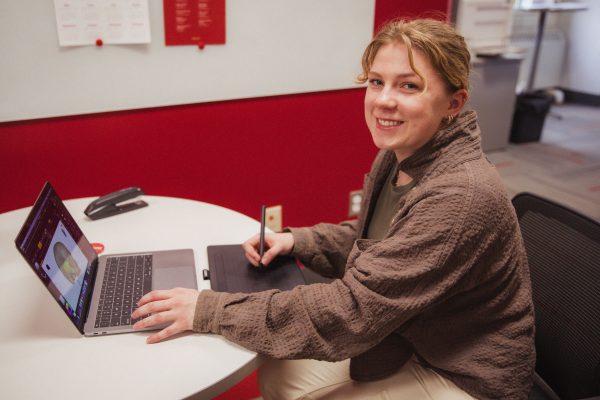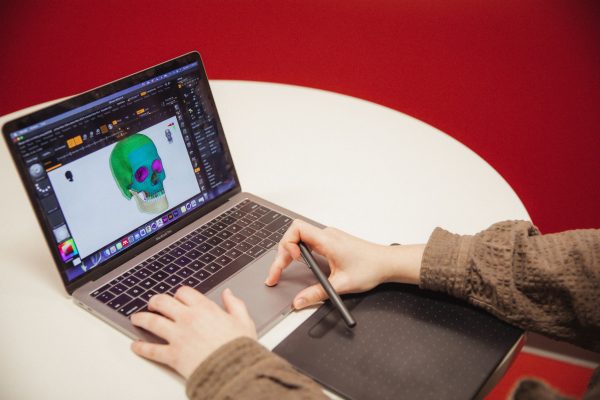Picturing a healthier world
Author: Stacey Maifeld
Author: Stacey Maifeld

When pharmacists need to understand the science behind life-saving anti-cancer drugs, they might look to educational resources illustrated by Ally Abel (’23 biological pre-medical illustration).
“These drugs often involve complex mechanisms and can include many different components that are important to showcase – the drug, the cells and proteins the drug interacts with, and the systems it may impact,” Abel said. “We work closely with content specialists to ensure that the content is accurate.”
Through her internship at iSO-FORM, an Ames-based company that brings medical, pharmaceutical, and biotechnology stories to life, Abel is gaining industry experience in using art and science to provide real-world tools for health professionals.
“It has been exceptionally valuable to be able to learn how to work within a team and interact with real clients,” Abel said. “I’ve also had the opportunity and have been encouraged to explore different modeling and animation programs that I otherwise would not have access to.”

For one of her projects, Abel learned a new 3D modeling program to design an interactive human skeleton that teaches human anatomy. The designs will be used by educational publisher McGraw-Hill. Abel worked on upper limb models that included muscles, arteries, veins, and nerves in the arms and thorax. She also 3D-modeled the brachial plexus and major arteries of the arms.
“Users can explore and highlight different anatomical landmarks on the different bones of the body,” she said. “It was challenging starting from scratch, but also incredibly rewarding to see the hard work I put in pay off and having assets I helped create included in the final product.”
Working in a team environment, interacting with clients, and learning new programs are all skills she will apply to her big-picture goal – sharing scientific stories through artistic observation. She plans to continue her studies with a graduate degree in biomedical visualization.
“I’ve always had a love for both science and art and couldn’t imagine giving up either of them,” she said. “Curiosity and exploration are fundamental to both science and art, and this field allows me to explore the bounds of my artistic creativity, challenges my biological knowledge without sacrificing my interest in either, and encourages me to ask questions and find answers.”